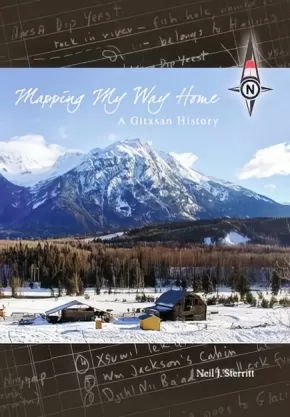Mapping My Way Home: A Gitxsan History
Synopsis:
Today the adjacent villages of Gitanmaax and Hazelton form one of the most picturesque communities in all of western Canada—a tiny, tourism mecca nestled in Gitxsan territory at the foot of an iconic mountain in the heart of the Skeena watershed. But 150 years ago these neighbouring villages were the economic hub of the north when packers, traders, explorers, miners, surveyors and hundreds of tons of freight passed through from Port Essington on the coast east to the Omineca gold fields, from Quesnel north to Telegraph Creek.
Mapping My Way Home traces the journeys of the European explorers and adventurers who came to take advantage of the opportunities that converged at the junction of the Skeena and Bulkley rivers. The author, Gitsxan leader Neil Sterritt, also shares the stories of his people, stories both ancient and recent, to illustrate their resilience when faced with the challenges the newcomers brought.
And finally he shares his own journey from the wooden sidewalks of 1940s Hazelton to the world of international mining and back again to the Gitxsan ancestral village of Temlaham where he helped his people fight for what had always been theirs in the ground-breaking Delgamuukw court case.
It’s British Columbia history, local history, family history and Gitxsan history. The book also includes a chapter on the history of BC’s land issues and a detailed description of Neil’s involvement in the Delgamuukw court case.
Additional Information
384 pages | 7.00" x 10.00"

 Go
Back
Go
Back





